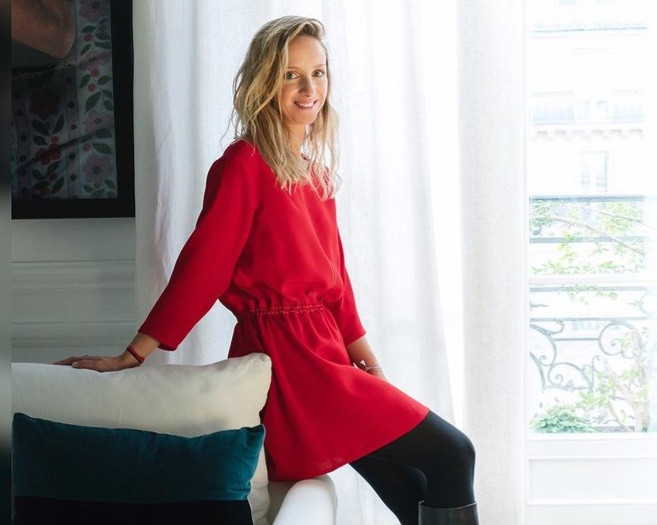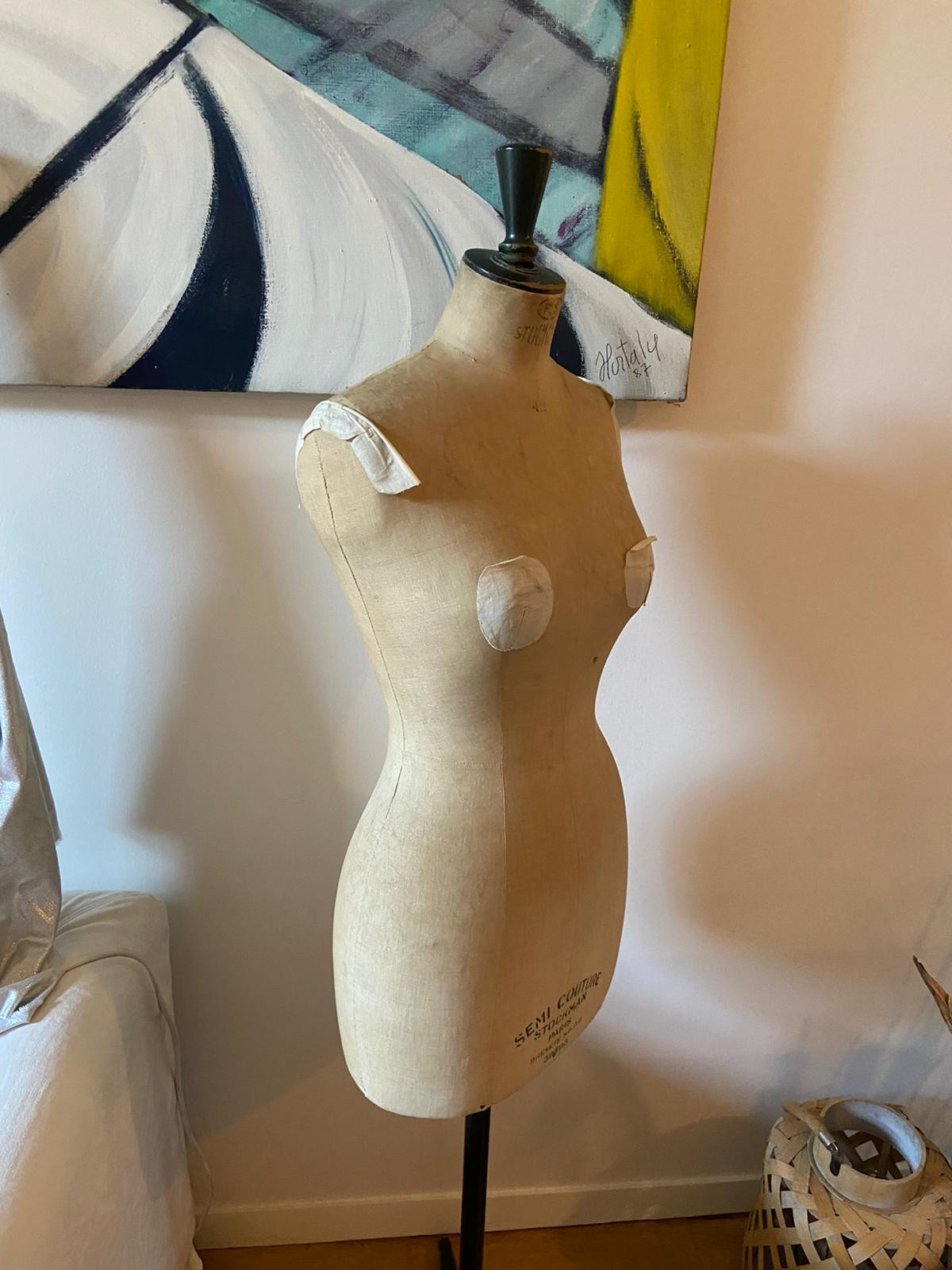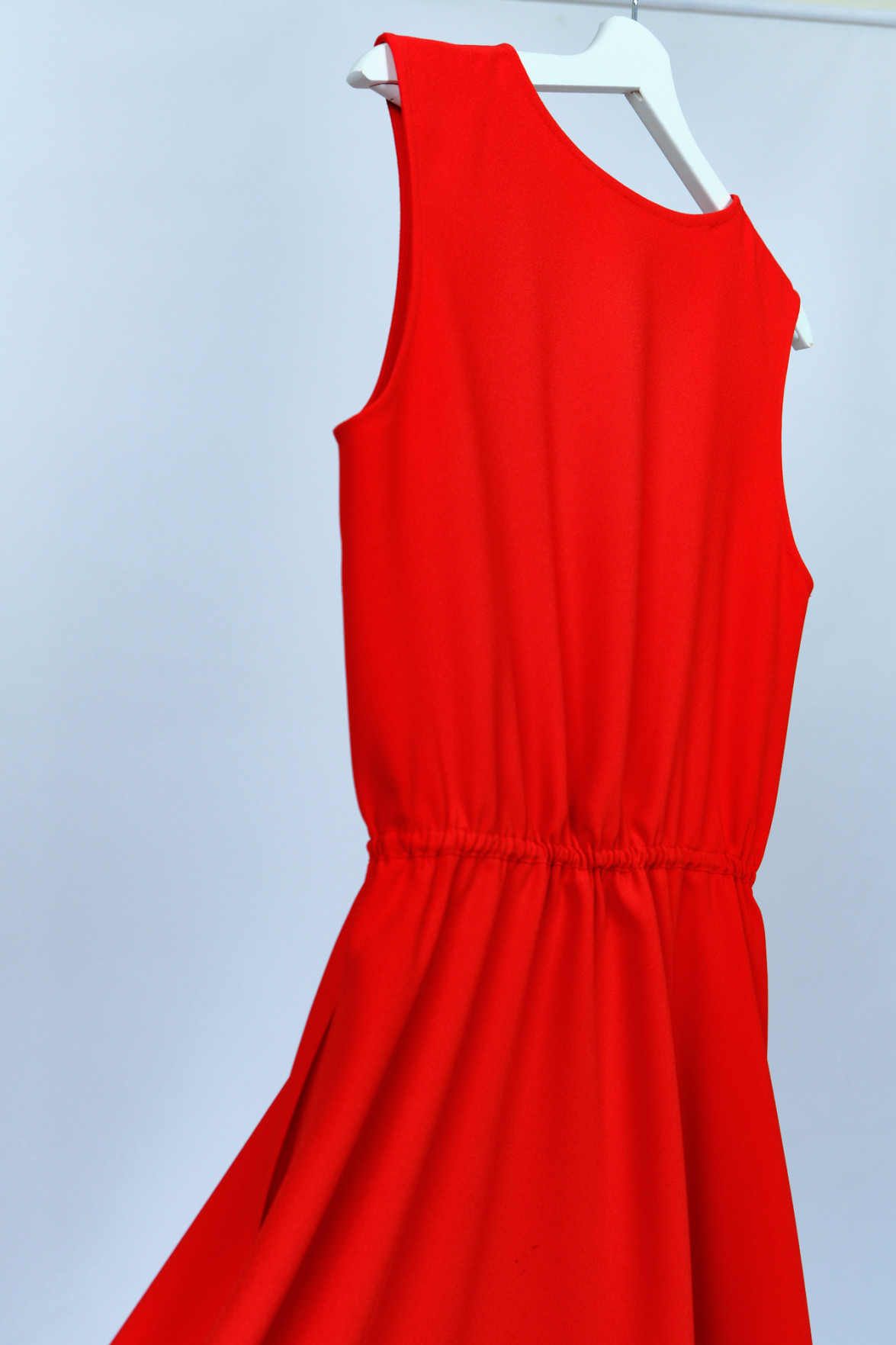JULIETTE DAVID, THE PROPHECY OF BARBE AND CIE
As a 2019 graduate of the master’s degree in Fashion and Luxury Management, Laure Tarneaud meets each month with an entrepreneur trained at IFM.
For the first portrait of this new series, Juliette David (Master of Fashion and Luxury Management, IFM 2016) tells us how she decided to relaunch Barbe and Cie, a brand created by her great-grandparents. Juliette is currently looking for a business partner to accompany her in her project. Portrait of an inspired young entrepreneur.
As part of the IFM Alumni, don't hesitate to support them on various networks, to make them known and of course to contact them for recommendations or collaborations!
No one is a prophet in their own country. From Paris, Juliette David has decided to relaunch Barbe and Cie, a clothing company co-created by her great-grandparents in Toulouse in 1935 before shutting its doors in 1981. Forty years after the company closed, this eager great-granddaughter wants to wake up the sleeping beauty.
When she walks through my door, Juliette is wearing her first design: a simple black polyester crepe dress. She claims that she has “never liked dresses” and yet she has chosen this particular piece for the awakening of Barbe and Cie in 2021. She bares a tote-bag full of dresses branded “Virginie Barbe”, the name of her great-grandmother, a dressmaker and stylist. Long years of history separate Juliette’s creations from her great-grandmother’s. In a confident voice, Juliette tells me about how she felt it was her destiny to awaken Barbe and Cie.
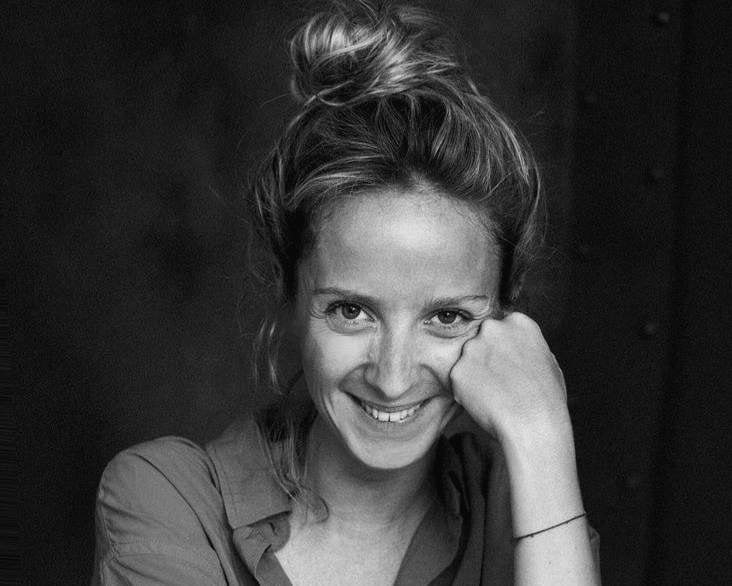 The family legend
The family legend
As a child, Juliette enjoyed reading ELLE and dressing her mother more than playing with her dolls. She loved listening to her aunts’ stories about “Baronie”, the name of a very chic street in Toulouse, where Virginie and Marius Barbe had bought a private mansion for their workshop Barbe and Cie. “My aunts would tell me about Manou, their grand-mother and my great-grand-mother, who used to take the measurements ofher clients and who also designed dresses. I grew up with a kind of fantasy of this story that I didn’t know.” The legend became reality when, at the age of 12, Juliette discovered a hidden room in the family home, a 6m2 attic, a sort of miniature workshop of the long lost magnificent of Barbe and Cie. On the shelves, rolls of fabric in perfect condition, wool, silks from Lyon and lace from Calais. On a Stockman mannequin, a Japanese printed dress seemingly awaiting a customer. Having spent most of my childhood summers locked up in the attic of my grandparent’s house, playing with my cousins or alone, searching for hidden treasures, and being a trunk fetishist, I can perfectly imagine the emotion Juliette felt. “I remember coming down from the attic with pieces of fabric that I had cut out and telling my family “But why didn’t anyone tell me?” At that precise moment, I promised myself that I would not let this sleeping beauty die out completely.” She always carries the small black notebook she found in the attic in which Virginie Barbe drew her sketches. A sort of prophetic talisman.
A certain obsession
At the age of 18, Juliette wanted to attend a fashion design school to follow in her great-grandmother’s footsteps. At the same age, Virginie had finished her training as a dressmaker in Tarbes (France) and married Marius. However, in a family that abandoned dressmaking for careers in law or medicine, Juliette decided that starting her education at a business school (ISG) and furthering it with a master’s degree in management at the IFM (Institut Français de la Mode) would be a better fit for her: “I am a bit of an oddity in my own family because I’m the only one with a real interest in fashion.” At her IFM oral, she convinced the jury by telling them her family story. “I can still see myself closing the door behind me and feeling like I was flying. I could tell I had found where I should be.” As for her various experiences as a saleswoman every summer, as an intern in styling at Sandro and in production at Maje (SMCP Group), as a personal shopper at Printemps, first a post-IFM end-of-study internship and then an open-ended contract, and finally as a project manager for Fashion Asia at the Parisian consultancy Nelly Rodi, Juliette assures us: “I made all my choices to get to where I am today: to wake up Barbe and Cie.” After a contractual termination and while the world discovered the Coronavirus, Juliette moved to Toulouse feeling finally ready to face her destiny.
A women’s tale
For hours, Juliette’s grandmother used to tell her tirelessly about “Baronie”, the atelier where 250 seamstresses would work on their Singer sewing machines, where the flou department, the tailors, the coats, and the fabric sales department made Barbe and Cie come to life. She would also reminisce about how her parents who were both from a small village called Sentenac in Ariège “started from scratch” and how they soon became the Toulouse bourgeoisie favorite couple. Barbe and Cie is therefore a “women’s tale: Virgine gave birth to a daughter and lost two children. Then my grandmother had 3 daughters, and they themselves had daughters, my cousins, whom I consider to be my sisters.” While Juliette was investigating her family past, she was also taking notes on her relationship with fashion: “Thanks to my experiences, I know what suits people, and I think I can tell what is timeless. I’ve always dreamed of having a dress that would be like a tshirt, without zippers or buttons and that could match everything. So, I designed a very simple dress and I imagined it in a various range of sizes, and with or without sleeves. This dress, I can imagine it in all colors, in all fabrics, in all prints.” In 2020, Juliette was finally able to tell her mentor Elie Kouby, the former CEO of Comptoir des Cotonniers and SMCP and co-founder of Experienced Captital that she was ready to relaunch Barbe and Cie.
Years of thinking, 1 year of development
On April 19, 2021, Juliette launched her crowdfunding campaign on the Ulule platform. She dismantled a dress bought in China to see what she liked and what she didn’t. She asked her cousin, a seamstress on her father’s side, who had trained at Studio Berçot in Paris, to create a timeless dress that could be worn in all seasons. Juliette chose a polyester satin crepe bought in France to get “a fresh feel on the inside, a real fluidity and a matte finish on the outside.” Today, the “Marguerite” (daisy) dress is available for pre-order in black, navy blue or coral red in sizes 34 to 42 (French sizes), with or without sleeves. The dress will be made in a workshop in Pantin, near Paris. From the original Barbe and Cie, Juliette has kept the name, the Klein blue logo and a strong sense of determination. Tomorrow she hopes to develop other essentials, like the petals of a daisy: shirts, jackets, skirts and trousers. Later, she dreams of having her own fabric with the logo Barbe and Cie so that her customers can customize the essentials with the fabric of their choice. And why not, one day invite guest brands, like Heimstone with its “crazy prints”, to collaborate with Barbe and Cie in order to mix creativity and design.
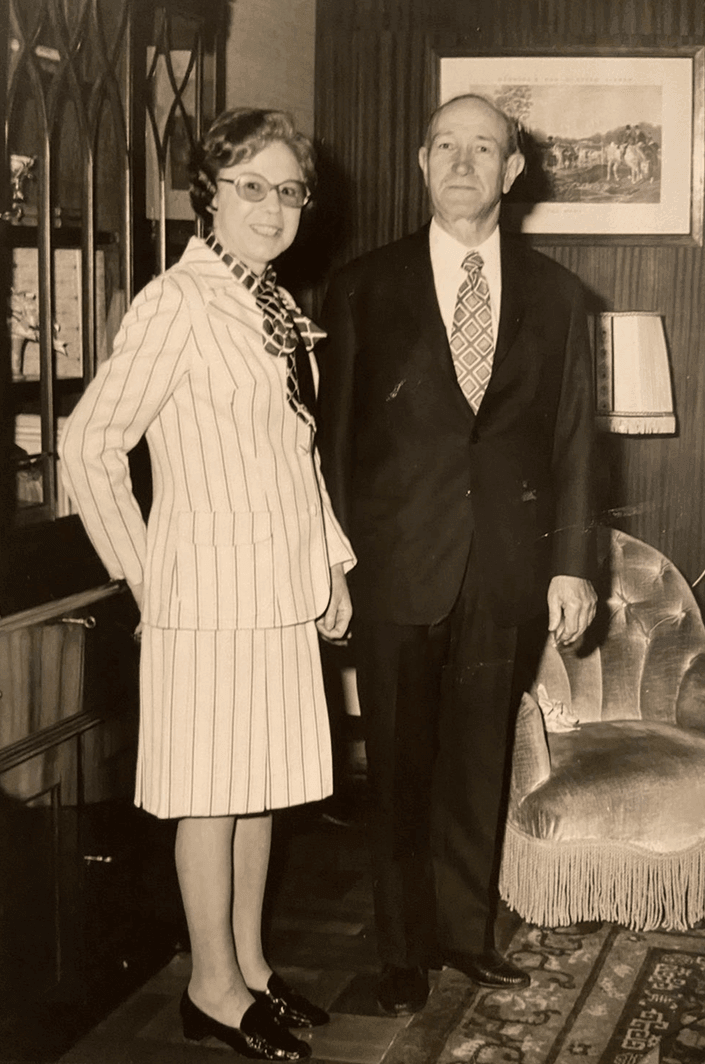 Rebirth and transmission
Rebirth and transmission
When I ask Juliette what is her best memory as a young entrepreneur, she doesn’t hesitate for a second: “the best thing that has happened to me was finding my great-grandmother’dresses. There is no greater emotion for me than to find these dresses, all these stories.” And when she opens her bag, I feel as if I’m diving into the family past with her. The famous white belted dress with a slightly Japanese print that was waiting in the attic catches my eye. Juliette would also like to launch a re-edition collection of vintage models inspired by Virginie. In the meantime, she hunts on Vinted, the second-hand platform, for all the models she can find. One came from Italy, and the former owner had bought it in a second-hand shop…in Barcelona! Juliette weaves a red thread: a story of rebirth and transmission. Passing on Virginie and Marius’s story but also passing on the story of how a garment is made. Like her great-grandparents before her, who used to recruit young dressmakers, Juliette would like to work with students from a fashion school near Toulouse to showcase their talent. “I can't say I'm a seamstress, if my great-grandmother heard me, she would laugh. I want to show my customers all the work that goes on behind the garment and rethink the ready-to-wear business locally.”
To achieve all her dreams, Juliette keeps her feet on the ground: “I am aware that I won't make it alone. I think I have ideas, a story to tell, a product to sell, and it would be a shame to let that go to waste. I'm calling for volunteers to find a business partner.” For those who are interested…And long live Barbe and Cie!

Image gallery4
Comments0
Please log in to see or add a comment
Suggested Articles



